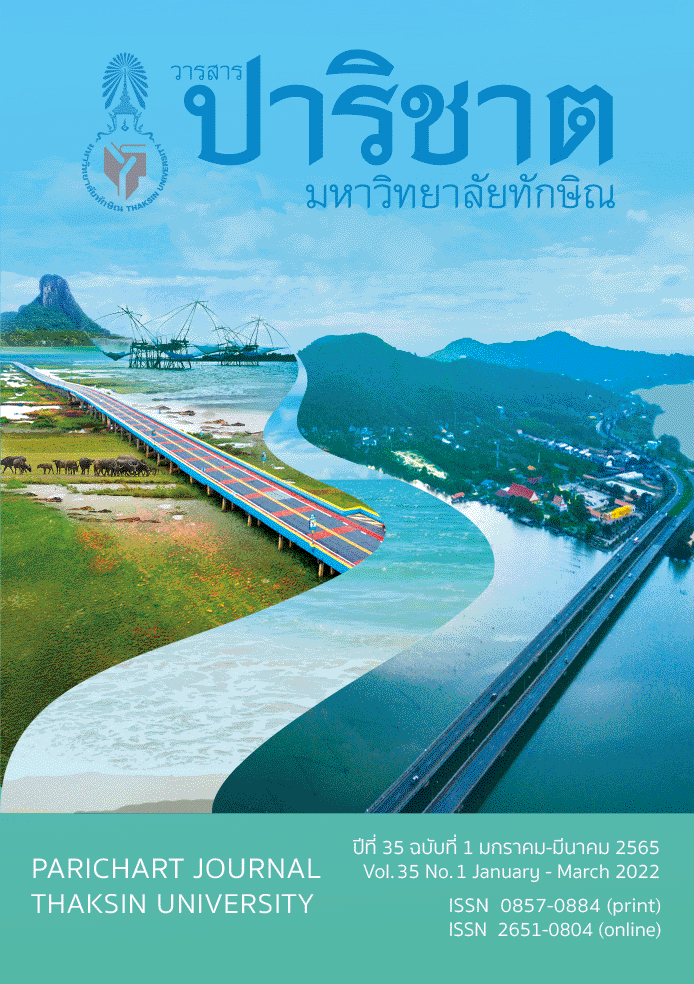Migration Policy of Highly Skilled and Skilled Foreign Workers in Singapore’s Primary Labour Market
Main Article Content
Abstract
TThe highly skilled and skilled foreign workers had played a key part in Singapore labour market which is derived from permission from Singapore government for the employers to hire the foreign workers. This article analyzes a migration policy of foreign workers for Singapore government which impacts an immigration and employment of highly skilled and skilled foreign workers in Singapore’s primary labour market by using a qualitative case study methodology. Based on the study, it was found that the migration policy of foreign workers for Singapore government is under a demand-driven system, in which an employer has to apply for a requisition to Singapore government on immigration and employment of foreign workers outside the labour market. However, a micro-level demand from an employer to hire foreign workers is served as a condition and benefit at macro level for a nation. In addition, Singapore government with a demand-driven system for immigration and employment of highly skilled and skilled foreign workers is less than semi-skilled foreign workers to attract those highly skilled and skilled foreign workers into Singapore’s labour market. Hence, destination country’s government should develop a migration policy, especially for highly skilled and skilled foreign workers in a primary market in order to attract those highly skilled and skilled foreign workers to be human capital for support a knowledge-based economic development of destination country.
Article Details

This work is licensed under a Creative Commons Attribution-NonCommercial-NoDerivatives 4.0 International License.
References
OECD. (2002). Policy Brief: International Mobility of the Highly Skilled. Paris: OECD.
OECD. (2009). Policy Brief: The Global Competition for Talent. Paris: OECD.
Kaur, A., & Metcalfe, I. (2007). Thematic Introduction: Migration Challenges in the Asia Pacific Region in the Twenty First Century. International Journal on MulticulturalSocieties (IJMS), 9(2), 131-134. Available online at: http://unesdoc.unesco.org/images/0015/001584/158473e.pdf.
Singapore Government. (2016). Population in Brief 2016. Singapore: National Population and Talent Division, Strategy Group, Prime Minister’s Office, Singapore Department of Statistics, Ministry of Home Affairs, Immigration and Checkpoints Authority. Available
online at: https://www.strategygroup.gov.sg/docs/default-source/Population/population-in-brief-2016.pdf.
Singapore Government. (2013). A Sustainable Population for a Dynamic Singapore: Population White Paper. Singapore: Singapore National Population and Talent Division, Prime Minister’s Office.
Piper, N. (2008). Feminisation of Migration and the Social Dimensions of Development: The Asian Case. Third World Quarterly, 29(7), 1287-1303.
Castles, S., & Miller, M. J. (2009). Theories of Migration. In S. Castles & M. Miller, (Eds.), The Age of Migration. (pp. 20-47). New York: Palgrave Macmillan.
Bunmak, S., & Chaophanitcharoen, P. (2020). International Migration Policy of Foreign Workers: A Case Study of Immigration and Employment in Taiwan. KKU International Journal of Humanities and Social Sciences, 10(2), 122-154. (In Thai)
Bunmak, S. (2019). International Migration Policy of Skilled Foreign Workers: A Case Study of Immigration and Employment in Malaysia. MFU Connexion Journal of Humanities and Social Sciences, 8(1), 258-299. (In Thai)
Skeldon, R. (2005). Globalization, Skilled Migration and Poverty Alleviation: Brain Drains in Context. Working Paper. The Development Research Centre on Migration, Globalisation and Poverty. Available online http://sro.sussex.ac.uk/11227/1/WP-T15.pdf.


